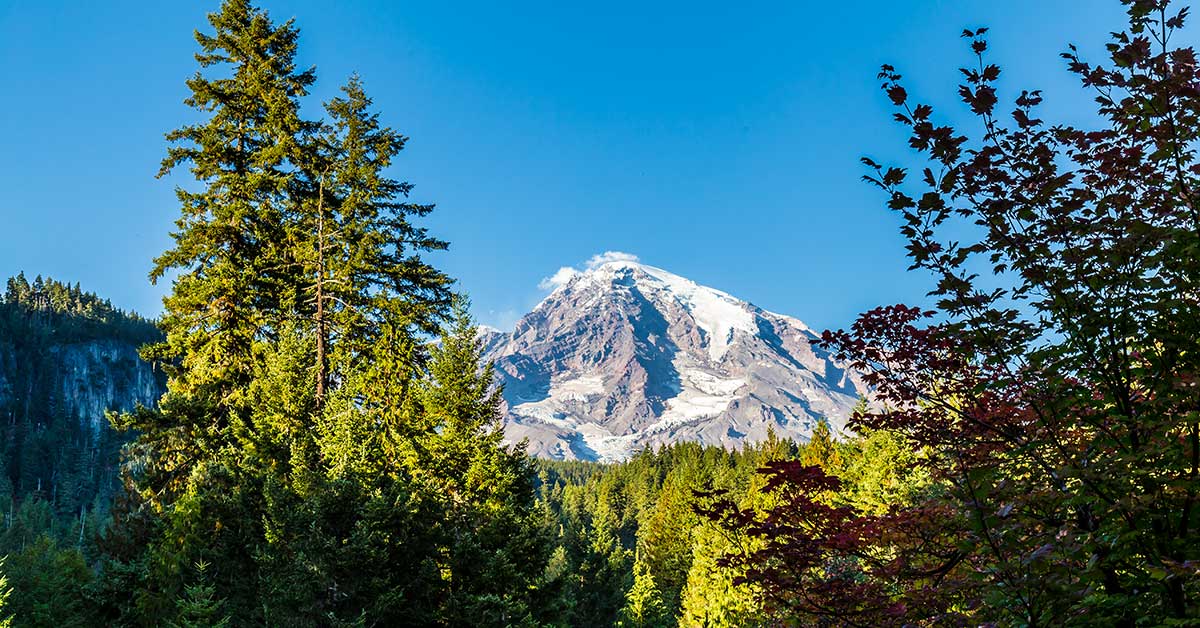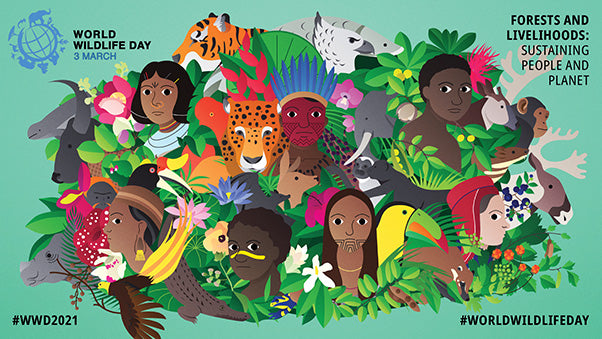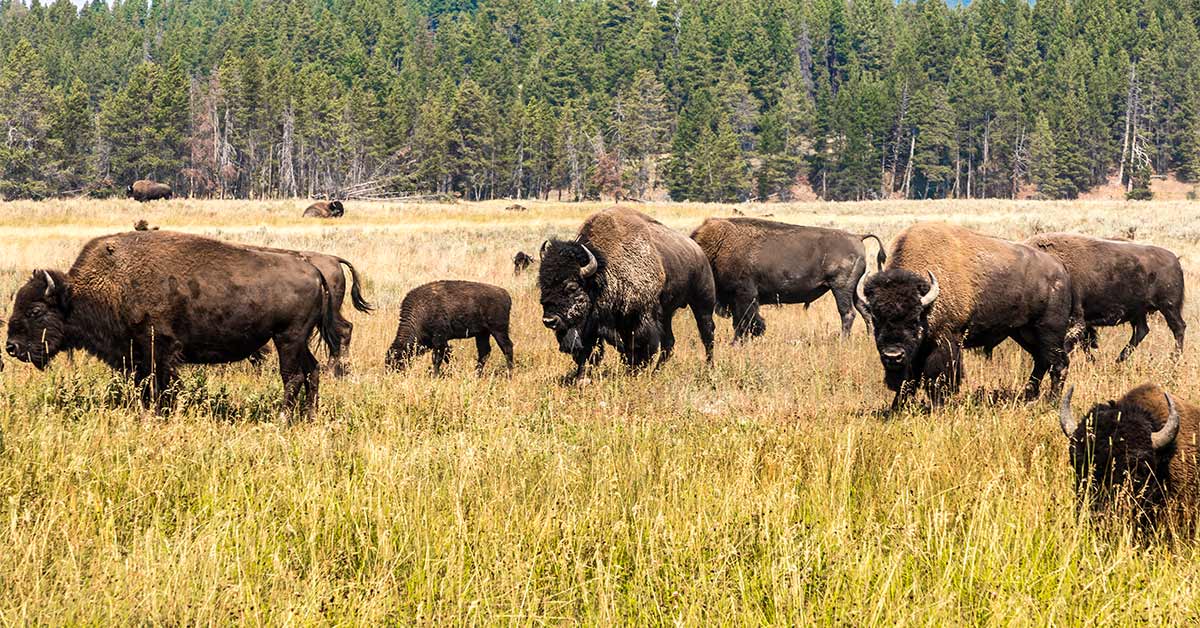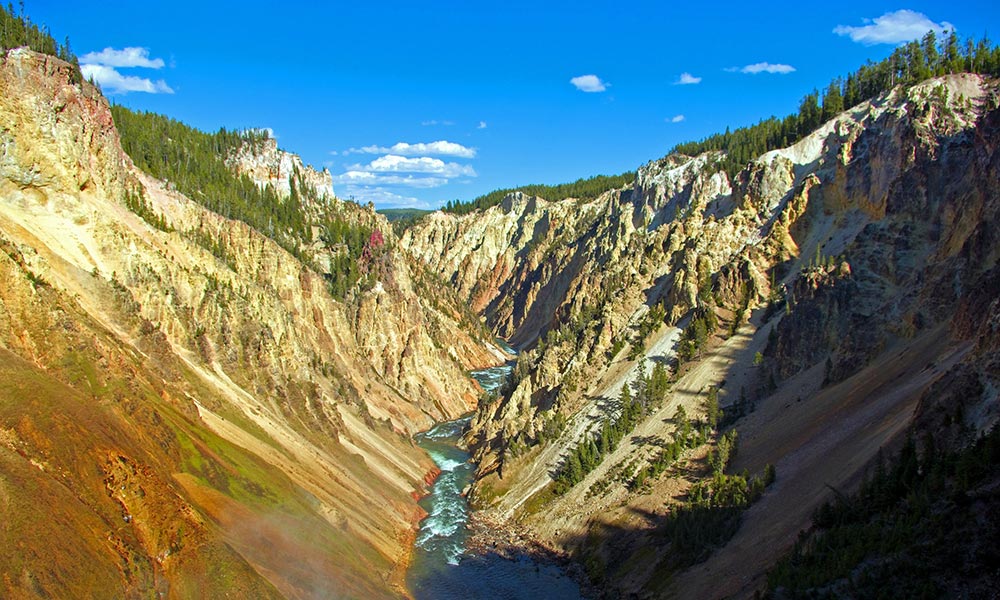After visiting Yosemite, General Grant and Sequoia National Parks, the Park-To-Park Highway group left the mountain climate behind them and headed into warmer weather. They continued on to Bakersfield on October 19th, where they were met by the automobile Club of California, and one other surprise visitor, who had emerged from his hospital bed.
The great pathfinder, Anton Westgard.
His desire to see through the tour temporarily outweighed his illness, but unfortunately, he could only rejoin the tour as far as Los Angeles. As the group moved west, Westgard traveled south to San Diego, where his health continued to decline. He would not rejoin the tour.

The Auto Club of Southern California had hosted them during their stay in Los Angeles, and when the group left, they traveled on what today is the famous Route 66. Traveling now in desert conditions dotted with Joshua trees, they journeyed to the next park on the list.
Zion National Park
With the intensely dry heat of the Mohave Desert being a constant companion, the Park-to-Park tour group's resolve was beginning to wane. Dust was an ever-present fixture on the road and it permeated everything, from their clothes to the engines of their automobiles. Their journey continued north, and after 4,000 miles of travel, a 500-mile trip to Zion National Park seemed not only impossible, but unbearable.
What's more, they simply had no time to spare.
 But what they did not realize was the beautiful other-worldly sights they would miss at Zion. With its sheer sandstone cliffs and green oasis in the desert, they could not fathom the scenery unless they saw it with their own eyes. Located on the edge of the Colorado Plateau, the rock that was pushed up over millions of years started to erode away, leaving a unique landscape with colorful rock formations and a desert river at the bottom, forming a ribbon of green in the middle of an arid land.
But what they did not realize was the beautiful other-worldly sights they would miss at Zion. With its sheer sandstone cliffs and green oasis in the desert, they could not fathom the scenery unless they saw it with their own eyes. Located on the edge of the Colorado Plateau, the rock that was pushed up over millions of years started to erode away, leaving a unique landscape with colorful rock formations and a desert river at the bottom, forming a ribbon of green in the middle of an arid land.
Oblivious to Zion's wonders, the party soldiered on.
Grand Canyon National Park
Even though Zion was bypassed, the group could not have anticipated the spectacular vistas they were about to experience. On October 26th, the caravan crossed the border into Arizona, arriving at El Tovar Hotel at the south rim of the Grand Canyon.
 They were not prepared for the truly awe-inspiring sight of endless miles of steep cliffs and colorful strada, made possible by the eroding force of the Colorado River. At some points, the Canyon is a mile deep; the result of millions of years of erosion and a perfect recording of the Earth's history.
They were not prepared for the truly awe-inspiring sight of endless miles of steep cliffs and colorful strada, made possible by the eroding force of the Colorado River. At some points, the Canyon is a mile deep; the result of millions of years of erosion and a perfect recording of the Earth's history.
The unbelievable spectacle of seeing the Grand Canyon for their first time has been known to leave some visitors so overcome that they simply faint, or sink down to their knees, crying with joy and wonder.
Varying from 4 to 8 miles wide, the Grand Canyon stretches for 277 miles. Previously set aside by past presidents as first a forest, and then a game reserve, it wasn't until 1919 that Congress made it a national park. In 1902, the first automobile came to the Grand Canyon from Flagstaff along a stagecoach route. Back then, that journey took 4 days. Construction of Rim Road began in 1908.
The tour group spent 3 days at the Canyon. On October 30th, they traveled on to Flagstaff. They continued east, stopping by Petrified Forest National Monument.
 By now it was November and winter was catching up. With the weather becoming a deterrent, they had to shift their itinerary and ship the cars up to Pueblo, Colorado. The trip had become too cumbersome for some and a few of the members left the tour to catch a train back home.
By now it was November and winter was catching up. With the weather becoming a deterrent, they had to shift their itinerary and ship the cars up to Pueblo, Colorado. The trip had become too cumbersome for some and a few of the members left the tour to catch a train back home.
The remainder of the group took a train to Durango.
Mesa Verde National Park
Despite the inclement weather, Steven Mathers joined the rest of the group for the final push to Mesa Verde. It was the only park on their journey to feature man-made structures, where the Pueblo people built their homes and sacred spaces 900 years ago. In a mysterious move, these ancient citizens abandoned their home and when the Europeans discovered it several centuries later, it became jeopardized when early tourists took delicate artifacts; some even vandalizing the area.
 It was then a group of ladies who realized they had to do something about it. Around the 1890's they began advocating for Mesa Verde to become a protected national park, and in 1906, their efforts paid off. Not only did they protect the cliff dwellings, but they commissioned the building of wells, trails, and eventually roads.
It was then a group of ladies who realized they had to do something about it. Around the 1890's they began advocating for Mesa Verde to become a protected national park, and in 1906, their efforts paid off. Not only did they protect the cliff dwellings, but they commissioned the building of wells, trails, and eventually roads.
When Steven Mather and company arrived at the park on November 6th, 1920, only one major road had been built so far, the Knife Edge Trail. Back in 1917, Horace Albright described this road as “one of the most disreputable, dangerous, fearsome bits of slippery rotted misery I ever had the misfortune to travel.”
This, of course, gave the Park-to-Park tour a renewed sense of their mission to preach the gospel of good roads.
Home Again, Home Again
After touring the last park on their grand circle tour, they headed back to Denver to attend a convention to further discuss the creation of good roads. But before that, they held their last meeting in Pueblo at the Congress Hotel. Then, on November 9th, the tour drove up South Broadway into Denver after 76 days of almost constant travel which saw them being escorted by 60 automobiles and a welcome banquet.
The group was able to show the world that visiting these national parks could be possible on passable roads going from park to park. Seven of the original 12 members completed the entire tour.
Anton Westgard was one of the more notable figures not in attendance that day. Alas, he had to remain in San Diego, as late-stage syphilis ravaged his body. He succumbed to the disease on April 3, 1921. He was 66 years old.
Later that year, Congress began the process of getting good paved roads to link the parks together, eventually creating the Park to Park Highway. It was a direct result of the enthusiasm that this tour created. These roads provided a whole new scale of American tourism. It opened the door to the concept that the almighty road trip is part of the American dream of adventure, freedom, and exploration.
Mathers, Westgard, and the entire Park-to-Park team literally paved the way for the Great American Road Trip, and of re-discovering the amazing beauty of the American West.
Click here to read Part 1 of the Park-to-Park Highway series...
or
Click here to read Part 3 of the Park-to-Park Highway series...
Meet Rob Decker, Creator of National Park Posters
Photographer and graphic artist Rob Decker studied photography with Ansel Adams in Yosemite National Park during the summer of 1979 when he was just 19. It was an experience solidified his love of photography and our National Parks. Now he is on a journey to photograph and create iconic WPA-style posters of all our major national parks as we celebrate the next 100 years of the National Park Service.
"I feel it's important to protect America's special places, and to connect people with nature. And it's up to all of us to pitch in. Perhaps more importantly, we need to inspire the next generation of park stewards. I'm trying to make a difference by giving back to the amazing organizations that support our National Parks. I donate 10% of annual profits, so when you buy one of these original works, you're helping these trusts, conservancies and associations, too."
Click here to meet the artist, Rob Decker.
Join the growing community of 75k+ National Park enthusiasts to receive insider deals and updates.
Source: https://national-park-posters.com/blogs/national-park-posters/park-to-park-highway-series-part-4
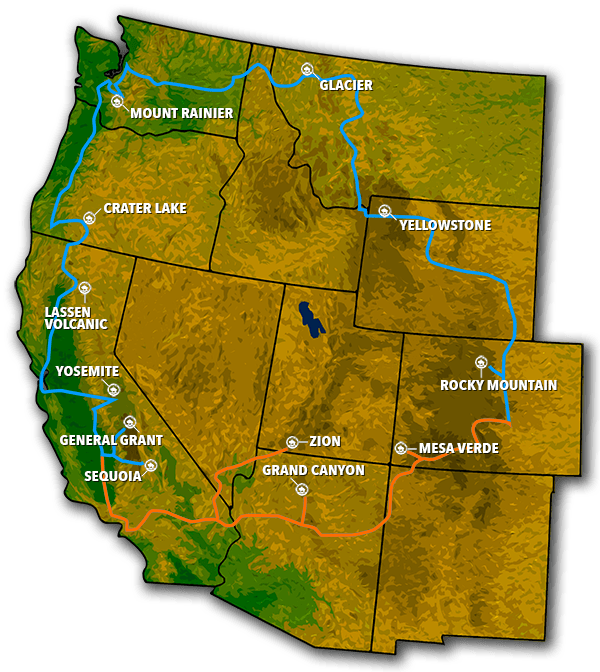










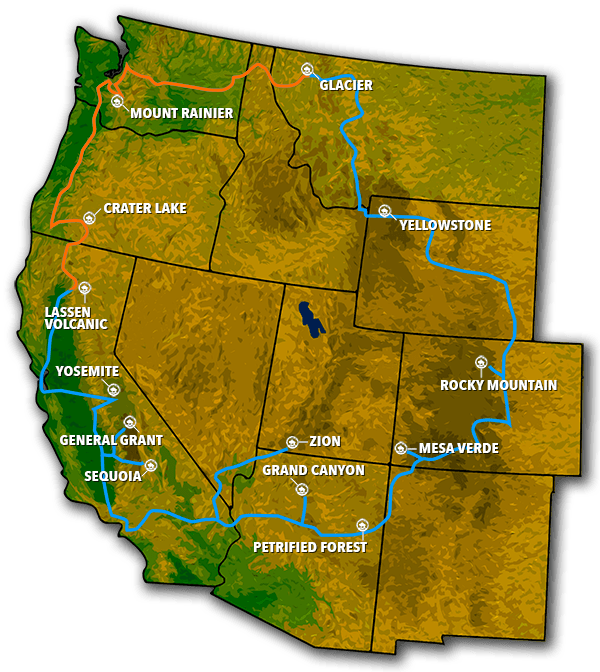





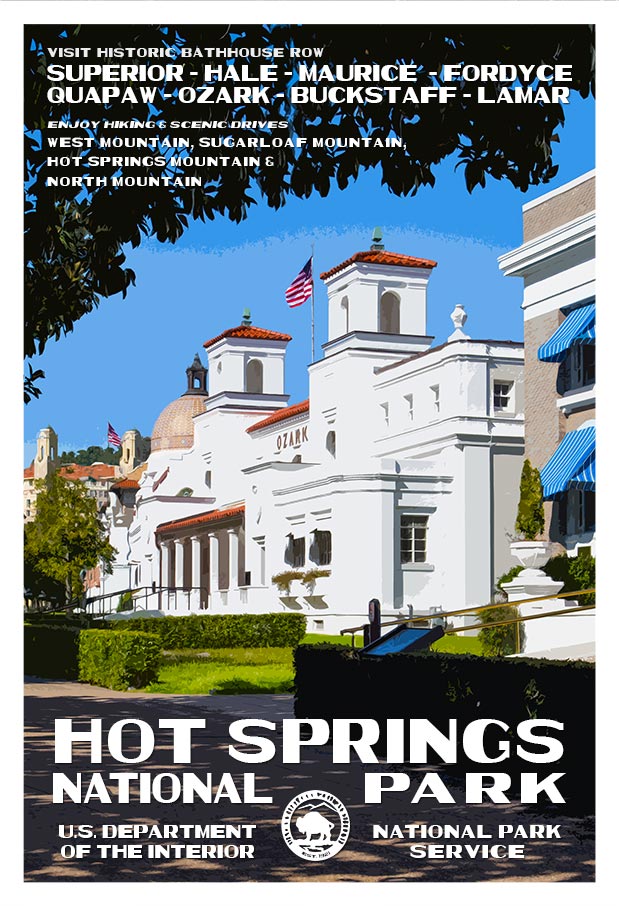









 It has three major peaks: Liberty Cap, Point Success, and the summit of Columbia Credit. Noted for its dense expanse of coniferous trees on the lower slopes and scenic alpine meadows, during the warmer months of July and August, wildflowers abound, give the area new life with a kaleidoscope of colors.
It has three major peaks: Liberty Cap, Point Success, and the summit of Columbia Credit. Noted for its dense expanse of coniferous trees on the lower slopes and scenic alpine meadows, during the warmer months of July and August, wildflowers abound, give the area new life with a kaleidoscope of colors. Despite its mountainous topography, the national park has several points of entry from the surrounding lowlands, allowing easy access for visitors. Sunrise Visitor Center is a good starting point, as it has much information on the park and is stocked well with maps and books, as well as panoramic views of the mountain and Emmons Glacier. It is also a jumping-off point for numerous trails around the perimeter of Mount Rainier.
Despite its mountainous topography, the national park has several points of entry from the surrounding lowlands, allowing easy access for visitors. Sunrise Visitor Center is a good starting point, as it has much information on the park and is stocked well with maps and books, as well as panoramic views of the mountain and Emmons Glacier. It is also a jumping-off point for numerous trails around the perimeter of Mount Rainier.


